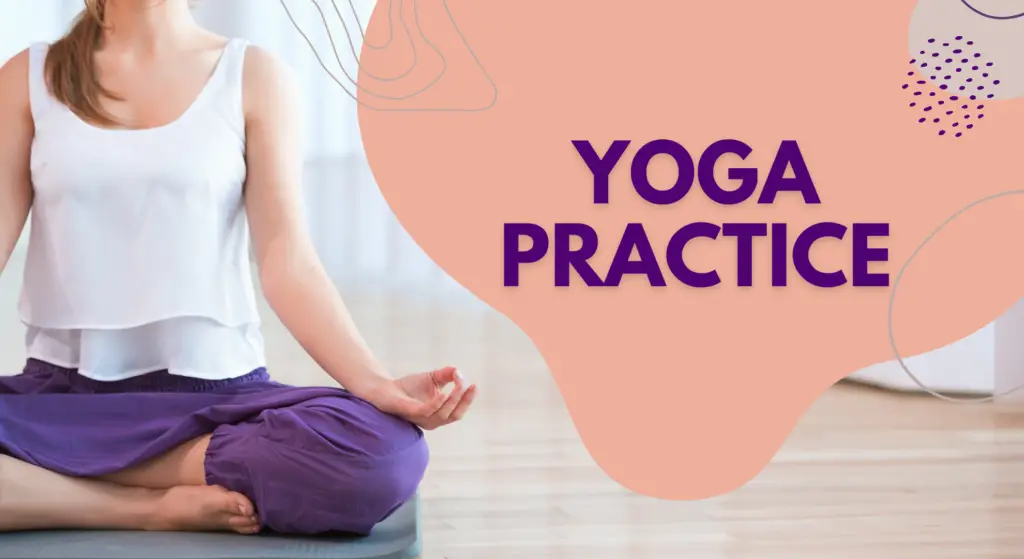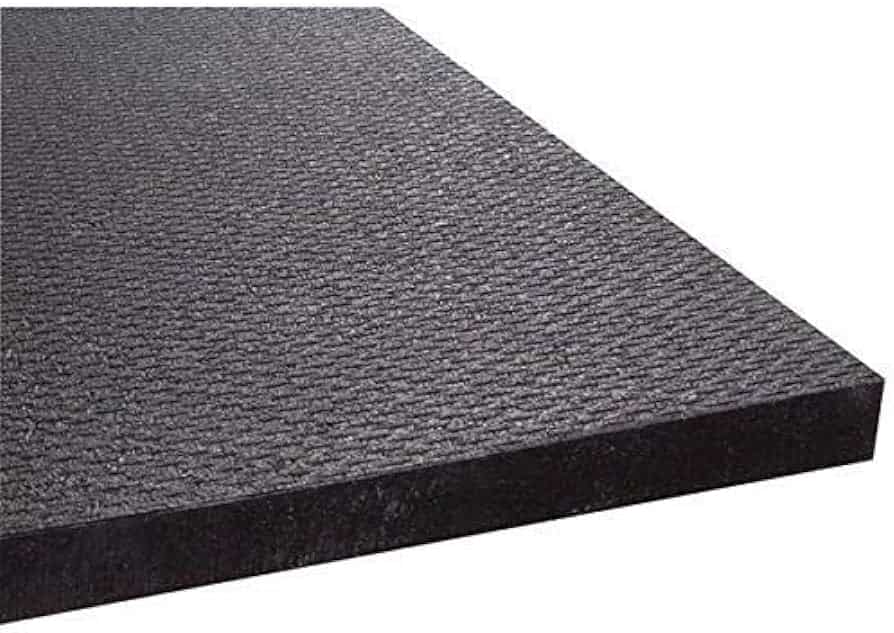
The yoga mat is one of the most essential pieces of equipment for any style of yoga, whether you’re a novice just getting started or a longtime practitioner. However, with the explosion in the popularity of yoga over the last decade, the options for yoga mats have diversified exponentially. What used to be a simple decision between basic sticky mat brands has evolved into an overwhelming array of sizes, materials, textures, and even aesthetic designs.
On top of that, environmental impact and ethics have also become a growing consideration for the eco-conscious yogi. Between distinguishing marketing claims and evaluating technical specifications like thickness and grip, choosing the ideal yoga mat can quickly become a confusing and stressful endeavor for someone new to yoga or simply looking to upgrade their existing mat.
This ultimate yoga mat buying guide aims to provide clarity, direction, and advice to yogis at every level. Whether you take vinyasa classes at a local studio, primarily practice hatha yoga at home, or just do the occasional downward dog, having the right yoga mat makes all the difference between struggling to find balance on a slippery surface and feeling grounded, stable, and centered during your flows. Read on for tips to identify your personal needs and sort through the extensive options to discover your perfect yoga mat match.
Considerations For Purchasing a Yoga Mat:
Before diving into the nitty gritty of materials and brands, it’s important to take a step back and assess your individual needs and preferences when it comes to a yoga mat. Carefully considering where and how you will use your yoga mat will help guide you to the ideal thickness, texture, size, and other specifications. Here are some key factors to contemplate:
Where You Practice Yoga:

If you primarily flow at home, you may want more cushioning for hard floors and the ability to sweat without slipping. For a dedicated studio practice, travel to classes, or outdoor yoga, you’ll likely want a thinner, lighter mat for easy transport.
Yoga Style:
The intensity and temperature of your yoga sessions should influence your yoga mat selection. Hot yoga demands exceptional grip to avoid hands and feet sliding in sweat. Gentler styles like yin or restorative yoga require ample cushioning for long holds.
Personal Needs & Preferences:
Consider your body type, age, any sensitive joints or injuries, general comfort preferences around padding and texture, plus lifestyle factors related to carrying and cleaning the mat. Those with latex allergies also need to be vigilant of materials.
Budget:
Yoga mat prices span from $15 to over $100. Set realistic expectations around affordable pricing tiers for basic mats versus investing in costly high-end brands designed for intense daily use.
Keep these personal considerations at the top of your mind while evaluating the following yoga mat features and specifications. Your individual practice style, needs, and budget will help determine the priorities.
Yoga Mat Features and Specifications:
Getting into the nitty gritty details of yoga mat construction, materials, and designs will empower you to understand the meaningful differences between options rather than getting overwhelmed by marketing lingo. Here are the most important criteria to evaluate:
Thickness:

The thickness of your yoga mat dramatically influences factors like cushioning for sensitive joints, padding for comfort on hard floors, and stability for balance during standing poses.
• 1/16 1/16-inch thick mats provide excellent portability and rollup compactness but lack adequate cushioning. Better for travel than daily practice.
• 1/8 inch is the most popular standard thickness that appropriately balances cushioning and stability for most home use cases. Provides decent comfort without instability.
• 1/4 inch+ maxes out on plushness with extra thick mats excelling at joint protection. However, more cushion can mean less groundedness in poses.
Grip:
A prime consideration for more vigorous yoga styles, exceptional grip keeps hands and feet from slipping out of alignment on sweaty mats. Materials like natural tree rubber excel on grip by nature while silicone or salt crystals are sometimes added to boost stickiness.
Textured vs. Smooth Surfaces:
The pattern or lack thereof on your mat surface also influences traction and moisture absorption. Textured mats help initiate grip while smoothing allows more contact of skin to mat. Consider sweat factors and whether you’ll wear yoga socks or be barefoot.
Folding Yoga Mats:
Seeking extended-size options, some opt for folding yoga mats with double the length for tall yogis or extra thickness for intense cushioning. These bulkier mats offer versatility but are less ideal for frequent transport.
Alignment Lines :
Especially beneficial for beginners, alignment lines run down the length of the mat to provide posture guidance and measure progress as you sink deeper into poses over time.
Yoga Mat Materials Comparison:
Diving deeper into the core components of yoga mat construction, the materials from which the mat is made impart key qualities around sustainability, durability, grip, cushioning and more. Here is an overview of the characteristics of common yoga mat materials to consider:
Natural Rubber
Harvested from rubber tree sap, natural rubber offers unmatched stickiness, excellent durability, and responsive bounce. Density provides decent padding for joints without being overly spongy. The grip withstands sweat and humidity. Latex-free options available.
PVC:
An affordable, lightweight foam material often used for budget mats. Easy to clean and transport but lacks in grip without additives. Not naturally eco-friendly but recyclable.
Cork:
Offering a unique feel underhand, cork absorbs impact and rebounds well during flows. Antimicrobial and heat-resistant qualities excel for heated classes. Less cushioning than rubber or PVC but provides stable footing.
Microfiber:
With extra absorbency for sweaty hot yoga practices, microfiber yoga mats provide a good balance of traction and cushioning. The fabric surface needs frequent cleaning for longevity.
Jute:
For the eco-conscious yogis, jute is an ultra-sustainable, biodegradable natural fiber but doesn’t match rubber grip. Typically used as a top layer combined with a non-slip secondary underside.
PU Leather :
At the higher end of mat pricing, luxury PU leather yoga mats appeal through sleek, stylish designs but are heavier for transport and offer less grip.
Ethical and Eco-Friendly Yoga Mat Options:
With growing awareness around sustainability, more yogis are considering the environmental impact of their yoga mats and looking for ethical brands that align with their values. Here are some key considerations around eco-friendly yoga mat options:
Material Impact:
Mats made from PVC and other synthetic materials tend to leave a larger carbon footprint compared to natural rubber, jute, cork, or other biodegradable options. Tree sap harvesting methods also vary for responsible sourcing.
Recycling Efforts:
Leading yoga brands like Manduka have pioneered yoga mat recycling programs to repurpose used mats. Search for brands investing in circular economies.
Processing Methods
From dyes to adhesives and finishing treatments, processing methods significantly sway environmental ratings. Seek transparency around responsible material processing.
End of Lifecycle:
Biodegradable yoga mats materials like jute and cork enable composting at the end of the life cycle over hundreds of years in landfills.
The most eco-friendly yoga mats combine biodegradable natural materials, responsible manufacturing, corporate carbon neutrality initiatives, and recycling programs. Brand trust and transparency ratings are improving as demand rises.
Factors Influencing Yoga Mat Pricing:
Yoga mats vary tremendously in pricing and quality depending on materials, manufacturing processes, brand reputation, and supply chain controls. Here is an overview of some of the factors that influence cost:
Material Costs:
Premium natural rubber sourced from renewable sources is generally the most expensive mat material given the higher cost of natural harvesting and processing methods. Synthetic PVC and EVA foams tend to be cheaper.
Location of Production:
Where in the world your mat is manufactured also sways cost considerations from labor to shipping expenses which get passed onto the consumer. Seek local production when possible.
R&D Investment:
Top brands pour money into research around materials science and innovation to push boundaries on grip formulations, absorbency, dimensional stability, antimicrobial additions, and more. New technologies get priced into premium mats.
Brand Value:
Part of what you pay for with established yoga mat brands is their name, community trust, and reputation built over decades. High-performing niche brands also command value.
It’s key to remember with yoga mats that the most expensive option doesn’t necessarily mean the highest quality. Find the balance between budget expectations, available usage budget, and mat composition that caters to your personal yoga needs.
Choosing Between Yoga Mat Brands:
The yoga mat marketplace has no shortage of brands all vying for your purchase through promises of superior grip, unparalleled comfort, and best-in-class materials. While slogans sound impressively innovative and unique, seeing through marketing claims requires going deeper into sourcing, sustainability initiatives, testing certifications, and components that support major mat functions like traction, cushioning, and durability.
Here is what discerning yogis should consider in their brand evaluations:
Years In Business & Community Trust:
Established brands like Manduka and Jade Yoga which pioneered natural rubber mat production decades ago have solidified immense community trust through reliable quality mats tested over time by millions of yogis. Newer startups lack that long-term perspective.
Style & Design Variety:
Beyond performance, having options among fashionable prints, colors and patterns allows personalization to your home decor tastes or studio practice style. Brands with collaborations also inspire unique designs.
Environmental & Social Ethos
With aligning personal principles playing a growing consideration for consumers when selecting brands across sectors, evaluating the depth of a company’s commitment to environmental standards, ethical working conditions, corporate social responsibility to community programs, and disabled inclusion makes a difference.
Advertising & Endorsements:
Massive marketing budgets and social media hype don’t necessarily equate to superior craftsmanship but do sway perceptions. Be cautious of false promises purely through influencer endorsements or sponsored content. Rely more on direct user reviews.
Product Comparisons & Testing:
Going beyond marketing fluff with independent lab testing and media evaluations on criteria like durability, longevity, traction, consistency across production batches, and delivery on functional promises provides the deepest insight on distinguishing durable high-performing mats from those prone to premature tearing, variable grip issues, or other quality concerns amplified over daily use.
Consider material integrity, quality assurance, ethics, and community benefit as much as branding when selecting your mat.
Yoga Mat Selection Guidance:
Determining exactly which yoga mat best matches your personal yoga practice and lifestyle priorities contains many variables. Here is an overview of key decision factors:
Considerations For Yoga Beginners:
If you’re just starting out on your yoga journey, consider a baseline-priced, well-cushioned mat around 1/8” thick with a textured surface for grip. Alignment lines can aid body placement as you learn. Stay mid-range budget until committing to practice regularly.
Considerations For Advanced Yogis:
With years of progressing practice under your belt, invest in a premium quality mat designed for daily studio use like the Manduka Pro with unparalleled cushioning and traction to support greater demand. Expect to pay more but the mat will faithfully last for years.
Personal Preference Priorities:
Get to know your preferences around the amount of padding, firmness or softness, grip, size requirements, weight if frequently transporting, plus environmental priorities as they all vary tremendously between mat offerings. Consider hiring or borrowing various mats before purchasing to make an informed decision.
Professional Guidance:
If still uncertain between final mat options after narrowing selections, consult with yoga teachers, personal trainers, physical therapists, or sports medicine professionals to assess options against your body, age, injury history, and goals. Therapeutic guidance on support, joint protection, and managing conditions steers savvy mat investments.
Trust your intuition alongside wisdom from experts around the highest quality mat for your practice style, frequency, ability level, and personal health profile. An ideal mat match greatly enables body opening, breath connection, mindfulness, and steadiness on the path of practice.
FAQ: About Yoga Mats

With so many specifications to consider around yoga mat sizing, materials, grip, cleaning and more, questions understandably arise for both novice and veteran yogis alike. Here are answers to some of the most common yoga mat FAQs:
Can I use an exercise mat for yoga?
While exercise mats seem synonymous with yoga mats, traditional gym mats lack the appropriate traction, cushioning, and durability to support safe yoga sequences long-term. Stick to specialized yoga mats.
How can I prevent slipping on my mat on carpet or smooth surfaces?
Place a non-slip mat or towel under your yoga mat to prevent sliding on slick hardwood floors or sliding off carpets. Rubber backing and traction technology also create grip.
What’s the best way to clean my yoga mat?
Use gentle soap and lukewarm water or an all-natural yoga mat spray cleaner for day-to-day maintenance. Avoid harsh chemical cleaners that degrade materials.
Can I transport my yoga mat on the handlebars of my bike?
Yes, a yoga mat carries a strap that allows you to securely attach your rolled yoga mat to bike handlebars for easy transport across town.
How do I prevent my yoga mat from unfurling when traveling?
Utilize a tight-fitting yoga mat strap to keep your mat neatly rolled and tie the ends tightly. Pack in a canvas or canvas mat bag for further protection.
Still have lingering questions about selecting, caring for, or transporting your ideal yoga mat? Talk to fellow yogis in your class or a local instructor for recommendations based on direct mat testing experience suited for your unique needs and environment.
Conclusion & Final Takeaways:
Finding your perfect yoga mat match that aligns with your practice style, personal needs, and environmental ethics can seem like a monumental decision amongst the sea of marketing claims, materials specs, and options in the expanding yoga equipment marketplace. As awareness builds around quality assurance, sustainability initiatives, and public demand for corporate transparency, brands will continue improving sourcing, manufacturing, and recycling programs which empower discerning yogis to make educated selections.
By beginning with an honest assessment of your yoga habits from home vs studio sessions to athletic flows vs gentle classes alongside realistic budget considerations, you can narrow down results that meet practical needs. Outline priorities around thickness, texture, grip, size, and padding to find the best fit. Thoroughly vet brands on community reputation, ethical standards, and materials evaluating third-party testing and certifications for guarantees that perform over years of nurturing your practice.
While a mat seems insignificant, subtle instability or discomfort negatively impacts mental focus, breath, postures, and stillness whereas a perfectly balanced mat, an extension of your asana, provides confidence, groundedness, and the trust to release deeper into practice. Committing to personal growth means committing to the tools, like a mat, that support the inward journey.
Top Yoga Mat Recommendations:

Provide specific yoga mat product recommendations for different needs: best hot yoga mats reviews
Best Overall: Jade Harmony Yoga Mat:
With excellent grip, cushioning, and durability, the Jade Harmony scores well across criteria for versatile home and studio use.
Best for Hot Yoga: Manduka eKOlite Yoga Mat :
The ultra-grippy, latex-free eKOlite prevents slipping with eco-friendly natural tree rubber construction ideal for sweaty practice.
Best Budget: Gaiam Print Premium Mat:
Well-cushioned with a lightweight grippy texture, the Gaiam Print Mat appeals stylishly on a budget.
Most Eco-Friendly: Hugger Mugger Para Rubber Mat:
Sustainably harvested natural rubber with zero PVC or EVA components makes this an excellent eco-friendly choice.
Premium Leather: Manduka Ekoplanet Mat:
A high-end luxury mat made from quality leather and latex with impeccable construction and design suited for daily use.
Yoga Mat Accessories Roundup:
Essential extras like towels, straps, and bags abound. Recommend top picks for:
– Yoga mat towels to soak sweat
– Yoga mat spray cleaners
– Storage and carry bags
– Straps for transport
Caring For Your Yoga Mat:
Investing in a quality yoga mat means you’ll want it to last and perform optimally for years. Here are some top tips for maintaining your mat:
• Clean regularly with gentle, natural cleaning sprays and towels to prevent bacteria buildup
• Allow to fully air dry before rolling or storing to prevent mold growth
• Sprinkle with baking soda to reduce odors between deeper cleans
• Store upright or rolled loosely, not folded tightly, to prevent creasing
• Consider a mat repair kit for surface scratches or tears
• Practice weekly inspection for signs of wear to address proactively read more
Transporting Yoga Mats:
For mobile yogis hitting the studio or taking their practice on the road, transporting your mat securely protects your investment. Methods include:
• Yoga mat straps to neatly roll and carry by hand
• Canvas reusable bags with shoulder straps
• Tying mat to your bike or backpack
• Using a mat tube carrier for airplane travel or storage
Seeking balance through yoga means honoring your equipment too. Care for your mat properly and it will support poses for countless sun salutations to come! Ready to find your perfect mat? Drop into your local yoga studio to test options hands-on with the guidance of experts guiding your practice each step of the way.
Elevate Your Experience: Before Read this article after you will move to next article
- How to Choose the Best Yoga Mat for Your Practice||
- The 7 Best Yoga Mat for Bad Knees to Reduce Pain and Discomfort||
- The Best Eco-Friendly Yoga Mats That Tread Lightly||